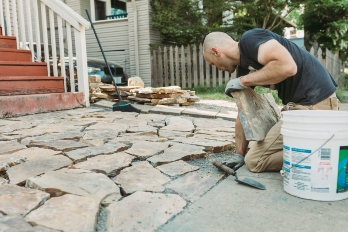It’s official: We’re in the post-holidays stretch of winter. That long, dark, cold time before the spring thaw. You may feel like hibernating until the sun comes back around … but as a homeowner, there’s always something to do!
For example, let’s say you drag yourself out of bed one morning and lumber into your kitchen. You make some coffee and take some vitamin D to combat the seasonal blues. Then you say, “Alexa, what’s the weather report for the day?”
Alexa says: “There’s a massive snowstorm brewing. Batten down the hatches!”
You say: “Alexa, how do I batten down the hatches?”
That’s what we’re here for! Here are 5 tips to help you get ready before the snow flies.
Inspect your home’s exterior
Your roof, siding, windows, and doors protect the inside from the elements. Make sure everything is in good shape before the weather gets ugly. And don’t forget about your gutters and trees — the weight of snow and ice can pull them down.
To do:
- Walk around your home and check for loose, missing, or damaged siding or roofing. If you find any issues, fix them ASAP. If there’s no time before the storm arrives, use tarps or plastic to cover openings that might let water in.
- Caulk cracks around your window and door frames. If your windows have storm windows lower them. If you don’t have storm windows, use plastic to add an extra layer of insulation and prevent drafts.
- Clean your gutters and downspouts. Debris left in your gutters can prevent water from draining and add extra weight to your gutter system. Too much weight and you may find your gutters in your yard.
- Remove tree limbs that hang over or near your home. Hire a professional to take care of any tree work near power lines.






